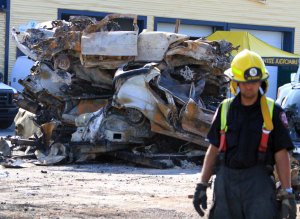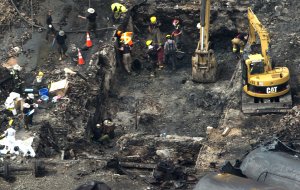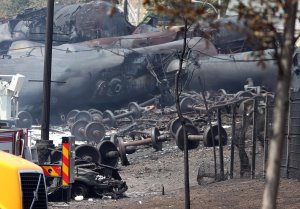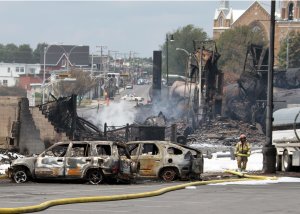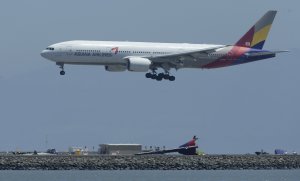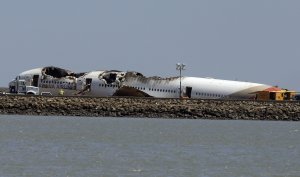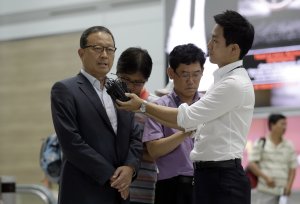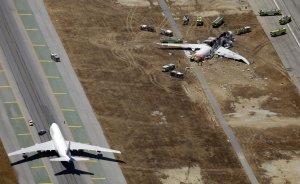BEST NEWS OF THE DAY
Friday 12 July 2013
Wednesday 10 July 2013
Alleged bomber heads for 1st public court hearing
Alleged bomber heads for 1st public court hearing
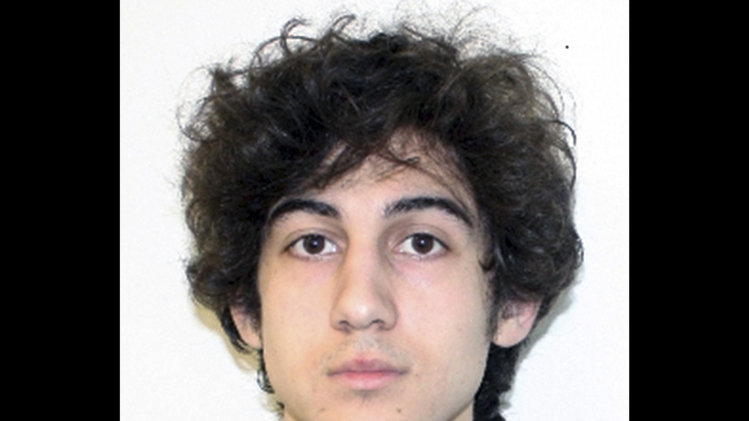
.
View gallery
FILE - This file photo provided Friday, April 19, 2013 by the Federal Bureau of Investigation shows Boston Marathon bombing suspect Dzhokhar Tsarnaev. If the Obama administration seeks the death penalty against Boston Marathon bombing suspect Dzhokhar Tsarnaev, it would face a long, difficult legal battle with uncertain prospects for success in a state that hasn’t seen an execution in nearly 70 years. Attorney General Eric Holder will have to decide several months before the start of any trial whether to seek death for Tsarnaev. It is the highest-profile death-penalty decision yet to come before Holder, who personally opposes the death penalty. (AP Photo/Federal Bureau of Investigation, File)

DENISE LAVOIESociety
BOSTON (AP) — Survivors of the Boston Marathon bombing will watch as the young man who could face the death penalty for the attack appears in court for the first time since he was found bleeding and hiding in a boat in a suburb days after the April 15 explosion.
Dzhokhar Tsarnaev's arraignment was scheduled for Wednesday afternoon in federal court in Boston. He has been charged with using a weapon of mass destruction in the bombings that killed three people and wounded more than 260.
The courthouse is expected to be jammed for 19-year-old Tsarnaev's appearance. A spokeswoman for the U.S. Attorney's office said space is being reserved in the main courtroom for victims' families, but she wouldn't indicate how many planned to attend. Court officials have set aside an overflow courtroom to broadcast the court hearing for the media.
Tsarnaev has yet to appear publicly since his April 19 arrest. His initial court appearance took place at a hospital, where he was recovering from injuries suffered in a shootout with police the day before in the Boston suburb of Watertown.
He had escaped in a hijacked car after running over his brother and alleged co-conspirator, Tamerlan Tsarnaev, who died following a shootout with police. But he was found the next day after a lockdown in Watertown was lifted and a local homeowner noticed blood on the drydocked boat.
Tsarnaev's arrest stunned people who knew him as a likable high school athlete in Cambridge, where he lived with his older brother after his parents left for Russia.
But prosecutors say Tsarnaev, a Muslim, wrote about his motivations for the bombing on the inside walls and beams of the boat where he was hiding.
He wrote the U.S. government was "killing our innocent civilians."
"I don't like killing innocent people," he said, but also wrote "I can't stand to see such evil go unpunished. ... We Muslims are one body, you hurt one you hurt us all."
The indictment also said that, sometime before the bombings, Tsarnaev downloaded Internet material from Islamic extremists that advocated violence against the perceived enemies of Islam.
Three people — Martin Richard, 8, Krystle Marie Campbell, 29, and Lingzi Lu, 23, a Boston University graduate student from China — were killed by the bombs, which were improvised from pressure cookers. Authorities also say the Tsarnaevs killed Massachusetts Institute of Technology officer Sean Collier days later while they were on the run.
Numerous bombing victims had legs amputated after the two explosions, which detonated along the final stretch of the race a couple hours after the elite runners had finished.
Tuesday 9 July 2013
Criminal probe in Quebec oil train derailment
Criminal probe in Quebec oil train derailment
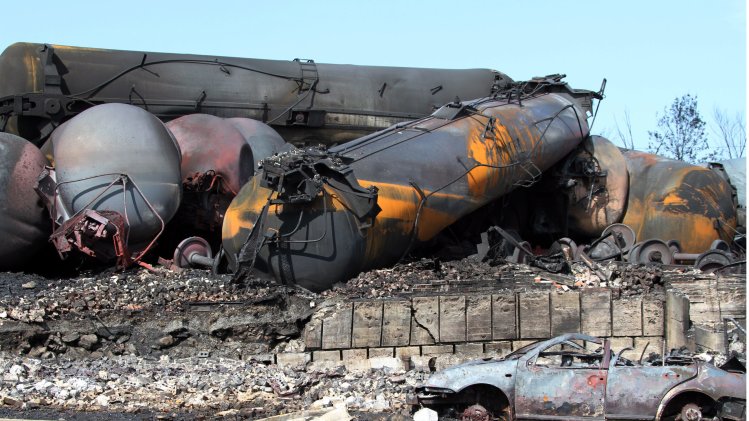
.
View gallery
 .
. .
. .
. .
.

SEAN FARRELL Society
LAC-MEGANTIC, Quebec (AP) — Canadian authorities said Tuesday they have opened a criminal investigation into the fiery wreck of a runaway oil train in this small town as the death toll climbed to 15, with dozens more bodies feared buried in the burned-out ruins.
Quebec police Inspector Michel Forget said investigators have "discovered elements" that have led to a criminal probe. He gave no details but ruled out terrorism.
The death toll rose with the discovery of two more bodies Tuesday. About three dozen more people were missing. The bodies that have been recovered were burned so badly they have yet to be identified.
Investigators zeroed in on whether a fire on the train a few hours before the disaster set off a deadly chain of events that has raised questions about the safety of transporting oil in North America by rail instead of pipeline.
The unmanned Montreal, Maine & Atlantic Railway train broke loose early Saturday and sped downhill in the darkness nearly seven miles (11 kilometers) before jumping the tracks at 63 mph (101 kph) near the Maine border. All but one of the 73 cars were carrying oil. At least five exploded.
Rail dispatchers had no chance to warn anyone during the train's 18-minute journey because they didn't know it was happening themselves, Transportation Safety Board officials said Tuesday. Such warning systems are not in place on secondary rail lines, said TSB manager Ed Belkaloul.
The derailment and explosions destroyed about 30 buildings, including the Musi-Cafe, a popular bar that was filled at the time, and forced about a third of the town's 6,000 residents from their homes.
Resident Gilles Fluet saw the approaching train.
"It was moving at a hellish speed," he said. "No lights, no signals, nothing at all. There was no warning. It was a black blob that came out of nowhere."
He had just said goodbye to friends at the Musi-Cafe and left. "A half-minute later and I wouldn't be talking to you right now," he said.
"There are those who ran fast and those who made the right decision. Those who fooled around trying to start their cars to leave the area, there are probably some who burned in them," Fluet said. "And some who weren't fast enough to escape the river of fire that ran down to the lake, they were roasted."
The same train caught fire hours earlier in a nearby town, and the engine was shut down — standard operating procedure dictated by the train's owners, Nantes Fire Chief Patrick Lambert said.
Edward Burkhardt, president and CEO of the railway's U.S.-based parent company, Rail World Inc., suggested that shutting off the locomotive to put out the fire might have disabled the brakes.
"An hour or so after the locomotive was shut down, the train rolled away," he told the Canadian Broadcasting Corp.
Lambert defended the fire department. "The people from MMA told us, 'That's great — the train is secure, there's no more fire, there's nothing anymore, there's no more danger,'" Lambert said. "We were given our leave, and we left."
Transport Canada, the government's transportation agency, said Tuesday there are no rules against leaving an unlocked, unmanned, running locomotive and its flammable cargo on a main rail line uphill from a populated area. Officials also said there is no limit on how many oil-filled, single-hull tank cars a train can pull.
Transportation Safety Board investigator Donald Ross said the locomotive's black box has been recovered but cautioned that the investigation was still in its early stages.
The tanker cars involved in the crash were the DOT-111 type — a staple of the American freight rail fleet whose flaws have been noted as far back as a 1991 safety study. Experts say its steel shell is so thin that it is prone to puncture in an accident.
The derailment also raised questions about the safety of Canada's growing practice of transporting oil by train, and is sure to support the case for a proposed oil pipeline running from Canada across the U.S. — a project that Canadian officials badly want.
Efforts continued Tuesday to stop waves of crude oil spilled in the disaster from reaching the St. Lawrence River, the backbone of the province's water supply. Environment Minister Yves-Francois Blanchet said the chances were "very slim."
Lac-Megantic's mayor said about 1,200 residents were being allowed to return to their homes.
___
Associated Press writers Rob Gillies and Charmaine Noronha in Toronto, Jason Keyser in Chicago James MacPherson in Bismarck, N.D., contributed to this story.
original link:
NTSB: Flight attendants ejected during crash

.
View gallery
 .
. .
. .
. .
.

MARTHA MENDOZA and JOAN LOWYDeborah HersmanAsiana AirlinesSan FranciscoSan Francisco International AirportFlight attendant
SOUTH SAN FRANCISCO, Calif. (AP) — Two flight attendants in the back of Asiana Airlines Flight 214 survived despite being thrown onto the runway when the plane slammed into a seawall and lost its tail during a crash landing at San Francisco's airport, the head of the National Transportation Safety Board said Tuesday.
Chairwoman Deborah Hersman also revealed that the pilots told investigators they were relying on automated cockpit equipment to control their speed during final approach, which prompts questions about whether a mistake was made in programming the "autothrottle" or if the equipment malfunctioned.
The plane crashed when it came in too low and slow for landing. Hersman said the pilot at the controls was only about halfway through his training on the Boeing 777 and was landing that type of aircraft at the San Francisco airport for the first time ever. And the co-pilot was on his first trip as a flight instructor.
Saturday's crash killed two people but remarkably 305 others survived, most with little or no physical injuries. A final determination on the cause of the crash is months away and Hersman cautioned against drawing any conclusions based on the information revealed so far.
Audio recordings show pilots tried to correct the plane's speed and elevation only until seconds before hitting the seawall at the end of the runway, a calamitous impact that sent the fuselage bouncing and skidding across the airfield.
Here is what is known: Seven seconds before impact, someone in the cockpit asked for more speed after apparently noticing that the jet was flying far slower than its recommended landing speed. A few seconds later, the yoke began to vibrate violently, an automatic warning telling the pilot the plane is losing lift and in imminent danger of an aerodynamic stall. One and a half seconds before impact came a command to abort the landing.
The plane's airspeed has emerged as a key question mark in the investigation. All aircraft have minimum safe flying speeds that must be maintained or pilots risk a stall, which robs a plane of the lift it needs to stay airborne. Below those speeds, planes become unmaneuverable.
Because pilots, not the control tower, are responsible for the approach and landing, former NTSB Chairman James Hall said, the cockpit communications will be key to figuring out what went wrong.
"Good communication with the flight crew as well as the flight attendants is something I'm sure they're going to look at closely with this event," he said Tuesday. "Who was making decisions?"
Hall was on the transportation board when a Korean Airlines Boeing 747 crashed in Guam in 1997, an accident investigators blamed in part on an authoritarian cockpit culture that made newer pilots reluctant to challenge captains.
Since then, the industry has adopted broad training and requirements for crew resource management, a communications system or philosophy airline pilots are taught in part so that pilots who not at the controls feel free to voice any safety concerns or correct any unsafe behavior, even if it means challenging a more senior pilot or saying something that might give offense.
If any of the Asiana pilots "saw something out of parameters for a safe landing," they were obligated to speak up, said Cass Howell, an associate dean at the Embry-Riddle Aeronautical University in Daytona Beach, Fla.
"There are dozens and dozens of accidents that were preventable had someone been able to speak up when they should have, but they were reluctant to do so for any number of reasons, including looking stupid or offending the captain," said Howell, a former Marine Corps pilot.
There's been no indication, from verbal calls or mechanical issues, that an emergency was ever declared by pilots. Most airlines would require all four pilots to be present for the landing, the time when something is most likely to go wrong, experienced pilots said.
"If there are four pilots there, even if you are sitting on a jump seat, that's something you watch, the airspeed and the descent profile," said John Cox, a former US Airways pilot and former Air Line Pilots Association accident investigator.
Investigators want to nail down exactly what all four Asiana pilots were doing at all times.
"We're looking at what they were doing, and we want to understand why they were doing it,." Hersman said Monday. "We want to understand what they knew and what they understood."
It's unlikely there was a lot of chatter as the plane came in. The Federal Aviation Administration's "sterile cockpit" rules require pilots to refrain from any unnecessary conversation while the plane is below 10,000 feet so that their attention is focused on taking off or landing. What little conversation takes places is supposed to be necessary to safely completing the task at hand.
Choi Jeong-ho, a senior official for South Korea's Ministry of Land, Infrastructure and Transport, told reporters in a briefing Tuesday in South Korea that investigators from both countries questioned two of the four Asiana pilots, Lee Gang-guk and Lee Jeong-min, on Monday. They planned to question the other two pilots and air controllers Tuesday.
Choi said recorded conversation between the pilots and air controllers at the San Francisco airport would be investigated, too.
In addition, authorities were reviewing the initial rescue efforts after fire officials acknowledged that one of their trucks might have run over one of the two Chinese teenagers killed in the crash. The students, Wang Linjia and Ye Mengyuan, were part of a larger group headed for a Christian summer camp with dozens of classmates.
Asiana President Yoon Young-doo arrived in San Francisco from South Korea on Tuesday morning, fighting his way through a pack of journalists outside customs.
He said he will look at the efforts of airline employees to help injured passengers and their family members, visit with the NTSB and other organizations to apologize for the crash and try to meet injured passengers.
Yoon said he can't meet with the Asiana pilots because no outside contact with them is allowed until the investigation is completed.
More than 180 people aboard the plane went to hospitals with injuries. But remarkably, more than a third didn't even require hospitalization.
The passengers included 141 Chinese, 77 South Koreans, 64 Americans, three Canadians, three Indians, one Japanese, one Vietnamese and one person from France.
South Korea officials said 39 people remained hospitalized in seven different hospitals in San Francisco.
The flight originated in Shanghai, China, and stopped over in Seoul, South Korea, before making the nearly 11-hour trip to San Francisco.
___
Associated Press writers Jason Dearen, Terry Collins, Paul Elias, Lisa Leff and Sudhin Thanawala in San Francisco and Hyung-jin Kim in Seoul also contributed to this report.
original link:
Subscribe to:
Posts (Atom)
